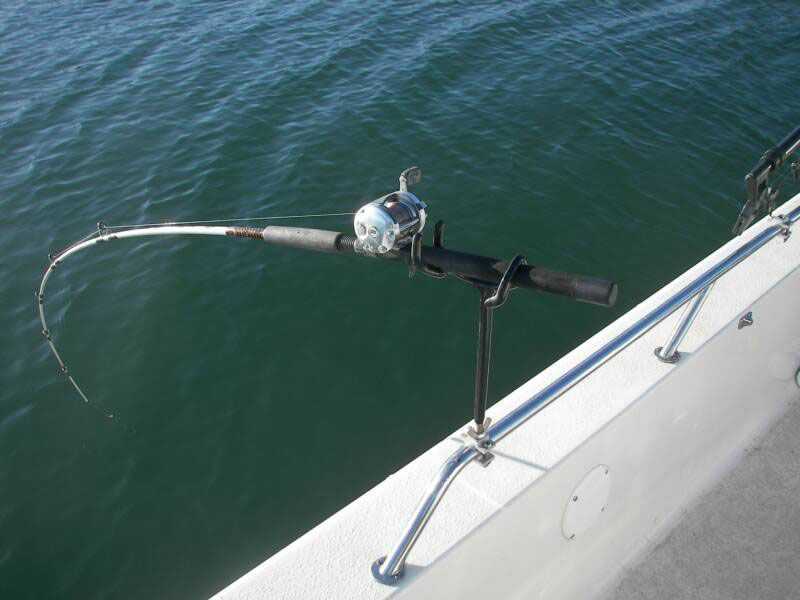It took me longer to recognize the obvious than I am willing to admit. Most anglers are taught early in their addiction to fishing to rear back on the rod with enough force to break a fish’s neck the instant they feel a strike. I remember largemouth bass fishing with a guide who gave me that exact instruction. After missing the first two strikes, I did it my way and the results were much more impressive.
Aboard a boat, rods are often put in rod holders when trolling or bait fishing until a strike occurs. Surf fishermen use a sand spike to hold the rod while a live bait swims around or a dead bait drifts across the bottom. In both instances the rod holder or sand spike keep the rod in a static position with absolutely no movement when a strike occurs. Usually, when the rod doubles over somebody points out that there is a fish on.
In recent years, I have tried to emulate a rod holder and not react forcefully when I feel a strike. Instead, I point the rod at the spot where the line enters the water, hold the rod perfectly still, and either wait for the fish to hook itself or start reeling until the line comes tight. The result is simply that I hook more fish that way than if I yanked back on the rod with all the force I can muster.
There is something equally important that I have discovered. Sometimes, if I move the rod or fail to hold it perfectly still and pointed at where the line enters the water, the fish will drop the bait. It doesn’t always happen, but the more I study hook setting, the more convinced I become that holding the rod perfectly still is an important part of the process.
Experience shows that most fish are lost during the first 30 seconds after the hookup or in the final moments when you are preparing to land your catch. Usually, when you hook a fish, it’s going to take off and run a good distance. All you can do when this happens is point the rod at the fish, let it take line, and don’t try to stop it or apply more pressure. In fact, the more line a fish takes, the less pressure you want to apply.
If you use circle hooks, you do not want to try to set it in any way. A circle hook has to set itself. Follow the procedures I just outlined and they work perfectly with a circle hook. It goes without saying that any hook you use should be the sharpest you can make it. In some situations with big fish, I will tie on a new hook after every catch.
Remember that a light wire hook makes it easier to plant in the jaw of a fish than one crafted from heavy wire. And, the lighter the line you are using, the smaller the hook you want to use. The size of the bait has little bearing on the size of the hook. Smaller, light wire hooks will handle most situations effectively and your percentage of fish hooked and landed will become impressive.
